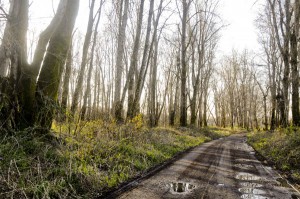forum
library
tutorial
contact

West Hayden Island Development Plan
More Environmentally Conscious
by Reed Jackson
Daily Journal of Commerce, March 26, 2012
|
the film forum library tutorial contact |

|
West Hayden Island Development Plan
by Reed Jackson
|
 A new development plan for West Hayden Island, an 826-acre plot of land at the confluence of the Willamette and Columbia rivers, could help convince the city of Portland to annex the island. The plan, which was developed by Australia-based design firm WorleyParsons, calls for building a marine terminal that would use only 300 acres of land - significantly fewer than the city originally thought would be needed.
A new development plan for West Hayden Island, an 826-acre plot of land at the confluence of the Willamette and Columbia rivers, could help convince the city of Portland to annex the island. The plan, which was developed by Australia-based design firm WorleyParsons, calls for building a marine terminal that would use only 300 acres of land - significantly fewer than the city originally thought would be needed.
"City Council challenged us to design a modern marine terminal with a smaller footprint - this proves yes, we can do that," said Eric Engstrom, project manager for the Bureau of Planning and Sustainability. "The WorleyParsons plan will provide some big factors into City Council's decision on what to do with the property."
The Port of Portland has proposed numerous developments for the island since it was brought into the urban growth boundary in 1983. But the proposals never amounted to anything mostly because of questions surrounding environmental and community impacts, as well as potential economic benefits. According to previous plans, the port would need 500 to 600 acres for construction of a marine terminal.
In light of recent construction on the east side of the island, Engstrom said the city was motivated to look more into island development. However, he said the city realized it had to reduce the project's scope in order to lessen negative impacts.
"Prior to this, the city was always driven to optimize the use of the facility and use all the acreage (on the island)," Engstrom said. "But the city recently made the project's small footprint a top priority."
As part of a resolution by City Council in 2010, the BPS hired various firms to collect data and draft design plans to see whether an effective marine development could be built on fewer than 300 acres of the island.
"We think this will be a really good tool for moving the process forward for the city," said Matt Laccinole, vice president of U.S. operations for WorleyParsons. "We've gotten nothing but really good feedback on it."
Laccinole said 500 acres of the island would be devoted to recreational use - mainly small trails - and habitat preservation, significantly reducing the project's impact on at-risk animals. He added that each proposed construction aspect was designed to minimize harmful effects on surrounding habitats.
The rest of the island would be devoted to the marine terminal, which would be made up of a number of wharfs, multiple storage units, crane space and a railroad loop that would connect to an existing railway between Portland and Vancouver, Wash. Previously, the size of the loop has been the focal point of debate surrounding development on the island.
"The key thing is providing an efficient rail loop, because we want it to be an economic, viable facility and that comes into question when you can't get efficient railroad access," Engstrom said. "We believe that's been done here."
Laccinole said WorleyParsons was able to reduce the loop's size by using different layout methods for the track.
"When we went into this, we had to make sure the operations side was matched with the environmental and recreational sides - we made sure to incorporate all three of those aspects equally," he said.
The plan would cost somewhere between $200 million and $400 million; the BPS stated it would be split evenly between public and private sources. The latter would be companies that would operate the facility. The range in cost reflects the possibility of building bridges to connect the island to the Oregon shore and the potential Columbia River Crossing.
Bob Sallinger, conservation director of the Audubon Society of Portland, which has consistently opposed development on the island, said the plan incorporates facts the society brought up during past development proposals and is more realistic.
"For the first time the city has seemed committed to getting good information; we've been saying since 1999 they don't need 600 acres to build," Sallinger said. "They've done a good job looking at the project and have created a solid foundation of information to make a difficult decision on."
Timme Helzer, founder and chairman of Friends of West Hayden Island, a 300-member association that aims to protect the island, agrees that the plan shows growth from previous proposals.
"The plan finally recognizes the Port of Vancouver has industrial space that can be developed into space for marine terminals," Helzer said. "The Port of Portland has resisted looking there for around 20 years."
However, neither Sallinger nor Helzer support development on the island. They both said that 300 acres of industrial development can harm wildlife and the community. Additionally, Helzer pointed out that the plan shows that only some people would benefit economically from the project.
"This project would make money for people shipping things and people receiving those things; the people running the port will shoulder most of the costs and the city will have to pay a hell of a lot for it," he said. "There's also very scant evidence it would create long-term sustainable jobs."
Engstrom said City Council will use the plan when it makes a decision on the island's use in July.
learn more on topics covered in the film
see the video
read the script
learn the songs
discussion forum
